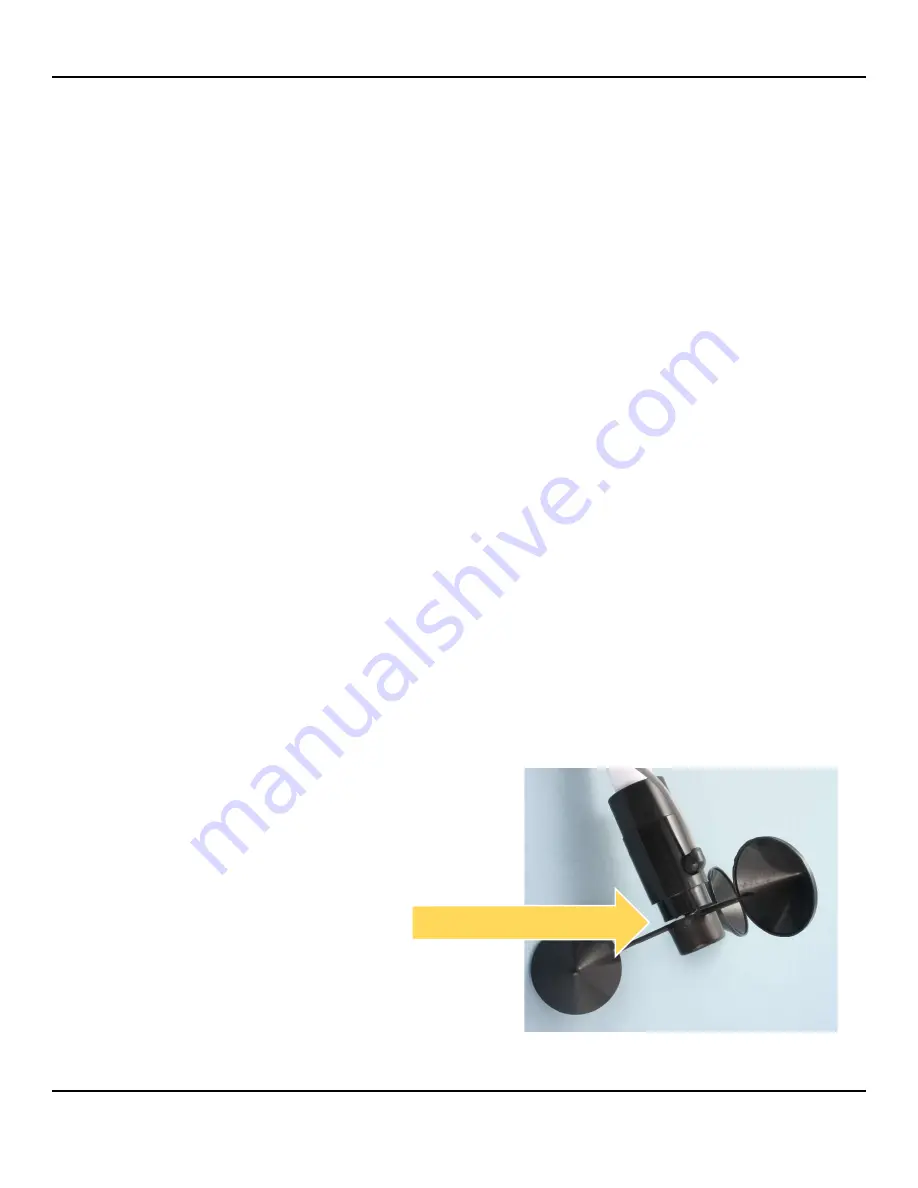
NovaLynx Corporation
200-WS-01
Page 9
April 2021
2.
Spin the anemometer cup assembly. It should turn freely. Apply a few drops of light machine oil
(e.g. fishing reel oil) to the bearing if needed.
Note:
Do not use WD-40 or similar products, as they
wear off quickly, leaving the bearing dry and susceptible to rust.
3.
Inspect the cable and ensure it is secured to the mast to prevent damage due to wind whipping.
4.
If one of the cup arms is damaged, the sensor may be user-repairable. Order the NovaLynx kit that
matches your sensor:
2502-14-01B
3-magnet wind cup assembly for
wind speed
sensors
2502-14-01C
1-magnet wind cup assembly for
wind run
sensors
10
FUNCTIONAL TESTS
The following checks can be done with an ohm-meter after the sensor has been dismounted from the
tower or tripod. These tests can help determine whether the sensor needs repair or adjustment.
Set the ohm-meter to a low resistance range and touch its leads together to check for zero ohms. If it is
an analog meter adjust the dial to read zero ohms. Connect the ohm-meter to the signal wires from the
anemometer (polarity is not important).
Rotate the cup assembly slowly until you notice the meter reading drop to less than 10 ohms. Continue
to rotate until the switch opens. Do this for each of the magnets in the cup assembly (3 magnets in
wind speed models, 1 magnet in wind run models).
If the meter always reads a low resistance then the reed switch is not opening (the contacts
may have welded together) or there may be a short circuit in the cable.
If the switch never closes then there may be a break in the cable or the magnets are not near
enough to activate the switch. Check the distance between the cup assembly and the base. The
gap should be about 1/16" (1.6 mm).
1/16" gap all sides










